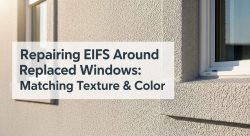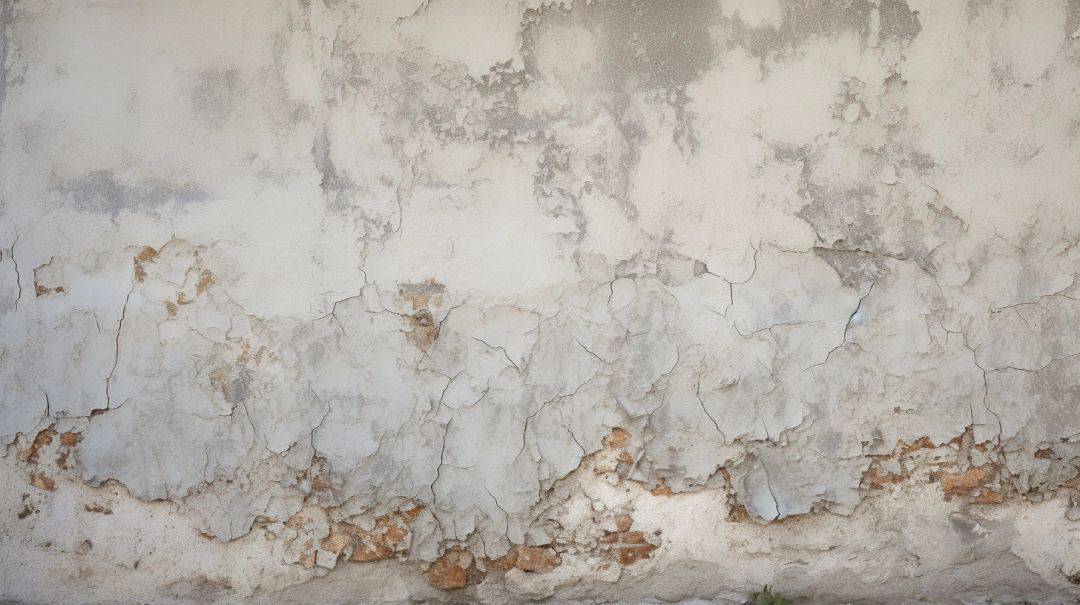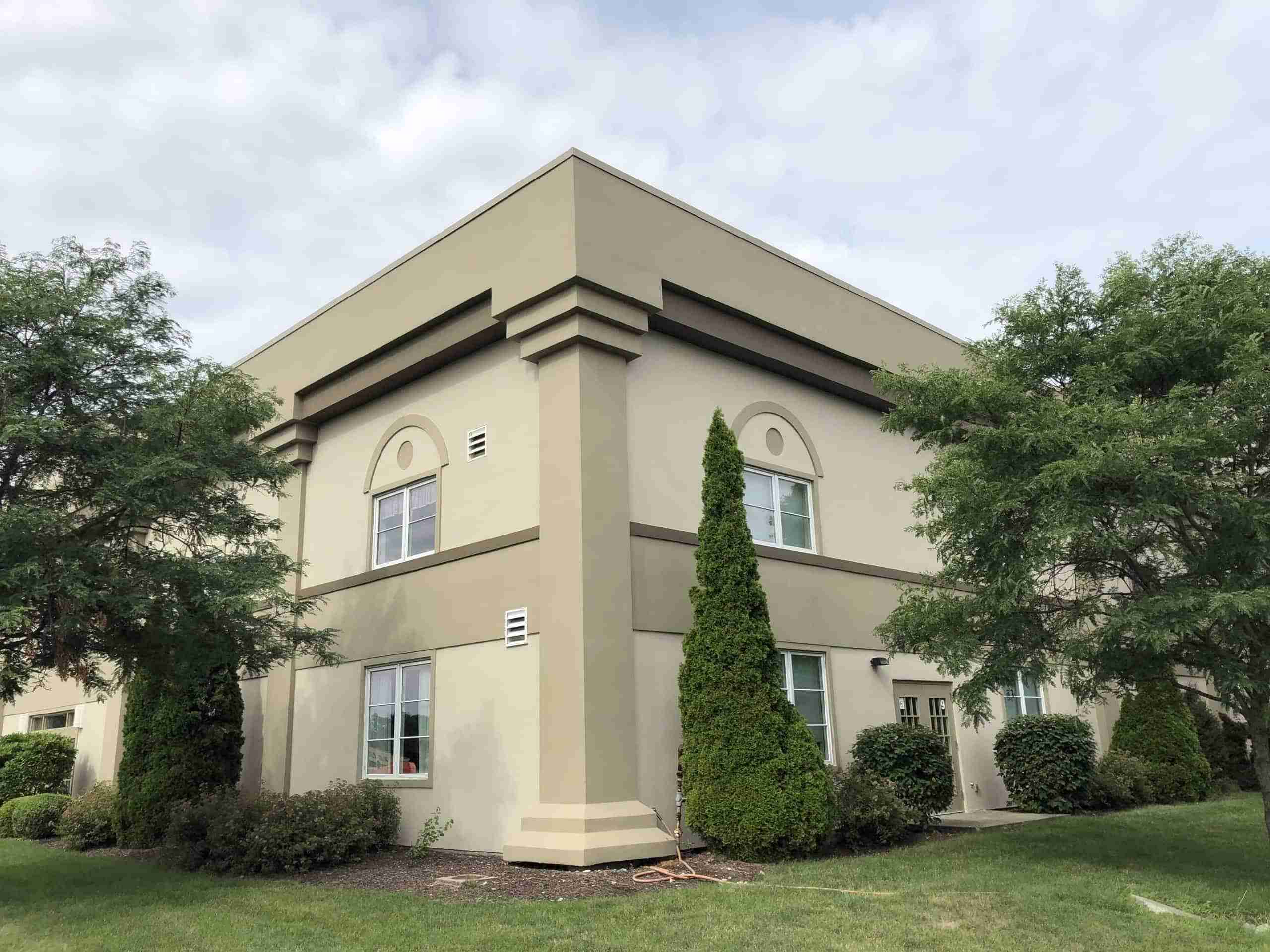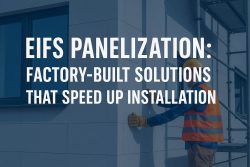Accelerated EIFS Installation Without Cutting Corners. Maximize Efficiency, Maintain Integrity, and Meet Tight Deadlines with Confidence
When deadlines are tight and budgets matter, fast-track construction doesn’t have to mean cutting corners. In my 22 years with Indiana Wall Systems, I’ve seen projects succeed brilliantly with accelerated schedules – and I’ve watched others fail spectacularly when speed became more important than quality.
The truth is this: You can absolutely speed up EIFS installation while maintaining the durability and energy efficiency that makes Exterior Insulation and Finish Systems so popular. But it takes the right approach, the right materials, and frankly, the right team.
Key Takeaways
- Proper planning can cut installation time by 30-40% without compromising quality
- Prefabricated EIFS panels and quick-curing adhesives are game-changers for tight timelines
- Weather window optimization prevents costly delays and rework
- Quality control testing becomes even more critical during accelerated projects
- Professional installation ensures warranty compliance and long-term performance
Understanding Fast-Track EIFS Construction
Fast-track construction isn’t just about working faster – it’s about working smarter. Traditional EIFS installation can take weeks for large commercial projects, but with lean installation methods and modern materials, we’ve compressed timelines significantly without sacrificing the structural integrity that keeps buildings safe and energy-efficient.
Installation Time Comparison – Traditional vs. Fast-Track
Traditional
Installation
8-12 weeks
Fast-Track
Installation
5-7 weeks
Average
Savings
3-5 weeks
Key Fast-Track Benefits:
The construction industry has evolved. Building codes and regulations now accommodate innovative installation techniques, and EIFS manufacturers have developed materials specifically designed for accelerated schedules. This means property owners can get their buildings enclosed faster, reducing weather exposure and getting spaces occupied sooner.
But here’s what I tell every client: Speed without proper installation is expensive. A rushed job that fails inspection or develops water damage down the road will cost far more than taking the time to do it right the first time.
Essential Components for Speed Without Compromise
Substrate Preparation Excellence
Substrate preparation remains the foundation of every successful project, fast-track or not. The difference lies in how we approach it. Instead of traditional methods that require multiple cure times, we use surface cleanliness protocols that allow us to move from prep to installation in the same day when conditions permit.
Moisture meter readings are non-negotiable. Even on compressed timelines, we verify substrate moisture content before applying any base coat or adhesive. This single step prevents more delays than any other quality control measure.
Advanced Materials for Accelerated Installation
Modern EIFS materials have revolutionized what’s possible with tight deadlines:
Quick-curing adhesive formulations now achieve full strength in hours rather than days. These aren’t experimental products – they’re proven solutions that maintain the same adhesion standards as traditional materials while dramatically reducing cure times.
Spray-applied basecoat systems eliminate the traditional trowel-and-wait approach. When applied correctly, these systems provide excellent reinforcement mesh embedding while cutting application time by up to 50%.
Prefabricated EIFS panels represent the biggest advancement for large commercial projects. Manufactured off-site under controlled conditions, these panels arrive ready for installation with insulation board, mesh, and base coat already cured. The time savings are dramatic, and quality is often superior to field-applied systems.
Strategic Project Timeline Compression
Project timeline compression requires rethinking traditional sequencing. Here’s how we approach it:
Off-site fabrication of complex details and trim pieces happens while site prep continues. By the time we’re ready for installation, everything is measured, cut, and ready to go.
Just-in-time delivery prevents material handling delays. Materials arrive exactly when needed, eliminating storage issues and reducing the risk of damage from weather or site conditions.
Crew coordination becomes absolutely critical. We run multiple specialized teams simultaneously rather than sequentially. While one crew handles substrate prep, another is cutting panels and a third is setting up scaffolding for the next elevation.
Weather Window Optimization Strategies
Indiana weather can make or break a project timeline. Weather window optimization isn’t about fighting Mother Nature – it’s about working with her.
Temperature-controlled curing using temporary enclosures allows work to continue in marginal conditions. Modern heating systems can maintain optimal cure temperatures even in winter, though this adds cost that must be weighed against schedule benefits.
We monitor weather forecasts constantly during fast-track projects. A three-day window of good weather might mean running extended shifts to maximize progress, while an approaching storm system might require protecting completed work and adjusting the schedule.
Indiana EIFS Installation: Optimal Weather Windows
❄️ Winter
Dec – Feb
🌸 Spring
Mar – May
☀️ Summer
Jun – Aug
🍂 Fall
Sep – Nov
Monthly Installation Feasibility
🎯 Optimal Conditions
- Temperature: 50-80°F
- Humidity: Below 75%
- Wind: Under 15 mph
- No precipitation forecast: 24-48 hours
- Stable weather patterns
⚠️ Risk Factors
- Extreme temperatures (below 40°F, above 90°F)
- High humidity (above 85%)
- Strong winds (above 20 mph)
- Rapid temperature changes
- Storms within 48-hour window
💡 Fast-Track Planning Tip
Monitor 7-day forecasts continuously. A 3-day window of good weather might mean running extended shifts to maximize progress, while approaching storms require protecting completed work and adjusting schedules.
Moisture control becomes even more critical during accelerated installation. Every penetration, every joint, every detail must be sealed immediately. There’s no time for “we’ll come back and seal that later” approaches.
Quality Assurance in Fast-Track Projects
Speed increases risk, which means quality assurance protocols must be more rigorous, not less. Our quality control testing checklist for fast-track projects includes:
Real-time inspections at every major milestone. Traditional projects might have daily inspections; fast-track projects get inspected at every major phase completion.
Thermal imaging spot-checks verify continuous insulation layer integrity and identify thermal bridging issues before they become problems.
Air barrier continuity testing ensures the building envelope performs as designed. Fast-track installation can create gaps that aren’t immediately visible but will cause energy efficiency problems later.
Fast-Track EIFS Quality Control Checklist
Critical Quality Checkpoints
Enhanced inspection frequency for accelerated installation
📋 Substrate Preparation
CRITICAL🔧 Material Application
HIGH🕸️ Reinforcement Mesh
HIGH💧 Moisture Management
CRITICAL🔍 Final Verification
ESSENTIALInspection Frequency: Fast-Track vs Traditional
Traditional
Fast-Track
“Speed increases risk, which means quality control must be more rigorous, not less” – Jeff Johnson, Indiana Wall Systems
Critical Quality Control Points
Mechanical fasteners placement and penetration depth get verified on every panel. Fast installation can lead to inconsistent fastening, which compromises both structural integrity and thermal performance.
Reinforcement mesh overlap gets measured and documented. Proper overlap ensures impact resistance and prevents cracks from developing at panel joints.
Sealant compatibility with accelerated cure materials must be verified. Not all sealants work with quick-cure systems, and incompatibility can cause adhesion failures.
Site Logistics and Crew Coordination
Site logistics planning makes or breaks fast-track projects. Material staging, equipment placement, and crew movement must be choreographed like a dance.
Scaffold safety becomes more complex with multiple crews working simultaneously. Clear communication protocols and designated work zones prevent accidents and maintain productivity.
We use safety harness systems that allow rapid position changes without disconnecting. This keeps crews safe while maintaining the pace necessary for accelerated schedules.
Jobsite efficiency depends on eliminating bottlenecks before they occur. If the adhesive mixer goes down, we have backup equipment ready. If weather delays one elevation, crews immediately shift to protected areas.
Advanced Installation Techniques
Continuous Insulation Strategies
Continuous insulation layer installation requires special attention during fast-track projects. Thermal performance cannot be compromised for speed, so we use systematic approaches that maintain quality:
Vapor diffusion calculations guide material selection and installation sequencing. Fast-track doesn’t mean ignoring building science – it means applying it more efficiently.
Thermal bridging reduction gets built into every detail from the start. Traditional projects might address thermal bridges during construction; fast-track projects must have these solutions designed and ready to implement.
Moisture Management Excellence
Drainage systems around critical penetrations like windows and doors get extra attention during accelerated installation. These areas are the most likely failure points, and fast-track installation increases the risk of installation errors.
Expansion joint spacing follows manufacturer specifications regardless of schedule pressure. Trying to skip expansion joints to save time inevitably leads to cracks and expensive repairs.
Joint backing rod installation might seem like a small detail, but proper installation is critical for long-term sealant performance. Rushed backing rod installation causes premature sealant failure.
Installation Process Optimization
Our optimized installation process for fast-track projects follows a proven sequence:
- Complete substrate preparation and verification
- Install mechanical fasteners and backing systems
- Apply base coat using spray systems where appropriate
- Embed reinforcement mesh with proper overlap verification
- Install expansion joints and detail work
- Apply finish coats using optimized spray techniques
Each step includes immediate quality verification. Problems caught early cost minutes to fix; problems caught later cost hours or days.
Optimized EIFS Installation Process Timeline
📋 Planning & Preparation
Material procurement, crew scheduling, weather monitoring
Traditional: 5-7 days
Fast-Track: 3 days with pre-planning
🔧 Substrate Preparation
Surface cleaning, moisture testing, structural verification
Traditional: 3-4 days
Fast-Track: 2 days with advanced testing
🏗️ Insulation Installation
Board placement, adhesive application, mechanical fastening
Traditional: 7-10 days
Fast-Track: 5 days with prefab panels
🎨 Base Coat & Mesh
Reinforcement mesh embedding, base coat application
Traditional: 8-12 days
Fast-Track: 5 days with spray application
✨ Finish Application
Final texture, color application, detail work
Traditional: 6-8 days
Fast-Track: 5 days with advanced materials
🔍 Final Inspection
Quality verification, thermal imaging, documentation
Traditional: 3-4 days
Fast-Track: 2 days with continuous monitoring
📅 Traditional Timeline
⚡ Fast-Track Timeline
🚀 Key Optimization Strategies
Parallel Processing
Multiple crews working simultaneously on different elevations
Off-Site Fabrication
Prefabricated panels and pre-cut materials ready for installation
Weather Windows
Strategic scheduling around optimal weather conditions
“The key to successful fast-track installation is understanding that speed comes from better planning, better materials, and better execution – not from skipping steps.” – Jeff Johnson, Indiana Wall Systems
Cost-Effective Fast-Track Solutions
Cost-effective installation during fast-track projects requires balancing speed, quality, and expense. Premium materials that cure faster cost more upfront but can reduce overall project costs by eliminating schedule delays.
Labor coordination becomes more expensive but more efficient. Running larger crews costs more per day but can complete projects in fewer total days, reducing overall labor costs and getting buildings occupied sooner.
Equipment rental for specialized tools like spray application systems and temporary climate control adds cost but can dramatically improve productivity and quality.
Building Code Compliance and Inspections
Compliance with building codes cannot be rushed. Local building codes require specific inspections at predetermined points, and these cannot be skipped or compressed. However, proper planning ensures building officials can perform inspections without delaying progress.
Inspector certification requirements vary by jurisdiction, but all EIFS installations must meet the same performance standards regardless of installation speed. We coordinate with building officials early in fast-track projects to ensure inspection schedules align with accelerated timelines.
Manufacturer specifications for cure times and environmental conditions must be followed exactly. Fast-track materials allow shorter cure times, but they still have minimum requirements that cannot be ignored.
Energy Efficiency and Performance
Energy efficiency performance must meet or exceed design requirements regardless of installation speed. EIFS systems are chosen specifically for their thermal performance, and accelerated installation cannot compromise these benefits.
Air barrier continuity requires special attention during fast-track installation. Gaps that might be acceptable during traditional installation become critical failures when buildings are occupied quickly after completion.
Vapor diffusion characteristics can change with different adhesive and coating systems. Fast-curing materials must provide equivalent vapor transmission properties to maintain building envelope performance.
Common Fast-Track Installation Mistakes
After 22 years in this business, I’ve seen every possible common mistake that can occur during accelerated installation:
Inadequate substrate preparation happens when crews rush to make up time. This is false economy – poor substrate prep causes adhesion failures that require complete reinstallation.
Gaps between insulation boards occur when installation pace exceeds quality control. These gaps create thermal bridging and can lead to cracks in the finish coat.
Insufficient cure time for adhesives and base coats causes long-term performance problems. Modern quick-cure materials still require minimum cure times that cannot be shortened.
Improper sealant application around penetrations is the most common water infiltration source. Fast-track pressure often leads to incomplete sealing that causes expensive water damage later.
Technology Integration for Modern Fast-Track Projects
Modern EIFS installation benefits from technology integration that wasn’t available even five years ago:
Infrared inspection during installation identifies potential problems immediately rather than after project completion. This real-time feedback allows immediate corrections.
Moisture meter technology now provides instant readings that guide installation decisions. We know immediately if substrate conditions are acceptable for adhesive application.
Weather monitoring systems provide hour-by-hour forecasts that allow precise scheduling of weather-sensitive operations.
Digital documentation of quality control checkpoints creates permanent records that satisfy warranty compliance requirements and provide protection for all parties.
Regional Considerations for Indiana Projects
Indiana’s climate presents specific challenges for fast-track construction. High humidity in summer affects cure times, while winter temperature swings require careful attention to temperature-controlled curing.
Our experience with EIFS installation in Carmel and surrounding areas has shown that weather window optimization is critical for project success. Spring and fall provide the most reliable installation conditions, but proper planning allows successful fast-track installation year-round.
Local building codes in central Indiana are generally accommodating to innovative installation techniques, but early coordination with building officials prevents delays and ensures smooth inspections.
Long-Term Performance Considerations
Long-lasting performance starts with proper installation, regardless of timeline. Fast-track EIFS installation can achieve the same durability as traditional installation when proper techniques and materials are used.
Warranty compliance requires following all manufacturer specifications exactly. Fast-track materials and techniques must still meet all performance standards to maintain warranty protection.
Proper installation and maintenance recommendations don’t change with accelerated installation. Building owners still need to understand EIFS maintenance requirements for optimal long-term performance.
Regular inspection schedules become even more important for fast-track installations. While properly installed systems should perform identically to traditionally installed systems, increased vigilance during the first year helps identify any installation issues early.
Material Selection for Accelerated Schedules
Building materials selection significantly impacts fast-track feasibility. Not all EIFS materials are suitable for accelerated installation:
Quick-curing adhesive systems must maintain adhesion strength equivalent to traditional materials. We test adhesion on every project to verify performance meets specifications.
Base coat formulations designed for spray application cure faster and provide better uniformity than trowel-applied materials when properly applied.
Finish coats with accelerated cure properties allow faster project completion while maintaining aesthetic appeal and weather resistance.
Reinforcement mesh specifications don’t change for fast-track installation, but handling techniques must prevent damage during rapid installation.
Quality Control Testing Protocols
Quality control testing for fast-track projects includes all standard tests plus additional verification steps:
Adhesion testing on every elevation verifies proper substrate preparation and adhesive performance.
Moisture testing before, during, and after installation ensures proper moisture control throughout the process.
Thermal imaging immediately after installation identifies installation defects before they cause problems.
Impact resistance testing verifies that accelerated installation hasn’t compromised system durability.
These additional tests add time and cost but provide confidence that fast-track installation has achieved the same quality as traditional methods.
Advanced Planning Strategies
Successful fast-track EIFS installation starts with comprehensive planning months before installation begins:
Design coordination ensures all details are resolved before installation starts. Changes during fast-track installation are expensive and disruptive.
Material procurement requires longer lead times for specialized fast-track materials and equipment.
Crew training on fast-track techniques and materials prevents learning curves from slowing progress.
Inspection scheduling coordination with building officials ensures required inspections don’t delay progress.
Weather contingency planning prepares for various scenarios and keeps projects moving despite weather challenges.
The Bottom Line on Fast-Track EIFS
Fast-track EIFS installation can deliver significant schedule and cost benefits when approached professionally. The key is understanding that speed comes from better planning, better materials, and better execution – not from skipping steps or cutting corners.
At Indiana Wall Systems, we’ve successfully completed fast-track projects ranging from commercial and residential applications to large multifamily developments. Our proven track record shows that properly installed EIFS systems can be installed faster without compromising the energy efficiency, durability, and aesthetic appeal that make EIFS the preferred wall system for modern construction.
The construction industry continues to evolve, and fast-track construction techniques will only improve. But the fundamentals remain the same: proper installation using quality materials by experienced professionals delivers the best results regardless of timeline.
Frequently Asked Questions
How much faster can EIFS be installed using fast-track methods?
Properly planned fast-track EIFS installation can reduce installation time by 30-50% compared to traditional methods. However, the actual time savings depend on project size, complexity, weather conditions, and the specific fast-track techniques used. Large commercial projects typically see the greatest time savings, while smaller residential projects may see more modest improvements.
Do fast-track installation methods affect EIFS warranty coverage?
No, when manufacturer specifications are followed exactly. Fast-track materials and techniques are developed by EIFS manufacturers specifically to maintain the same performance standards as traditional installation methods. Warranty compliance requires following all specified procedures, cure times, and quality control measures regardless of installation speed.
What additional costs should be expected for fast-track EIFS installation?
Fast-track installation typically adds 10-20% to material costs due to premium quick-cure products and specialized equipment. However, reduced labor duration and faster building occupancy often offset these additional material costs. The total project cost may be lower when reduced construction financing costs and earlier revenue generation are considered.
Fast-Track EIFS: Cost Analysis Breakdown
Material Costs
Premium quick-cure materials and specialized equipment
Labor Duration
Reduced on-site time and faster completion
Overall Impact
Faster occupancy often offsets material premiums
Project Cost Timeline Impact
Traditional Schedule
Fast-Track Schedule
Bottom Line
While fast-track materials cost 10-20% more, reduced financing costs and earlier occupancy typically provide net savings of 5-15% on total project cost.
Can fast-track EIFS installation be done in all weather conditions?
Fast-track installation is actually more weather-dependent than traditional methods. Temperature-controlled curing systems can extend the working season, but optimal results require careful weather window optimization. Indiana’s climate allows fast-track installation most of the year with proper planning and equipment.
What are the most critical quality control points for fast-track installation?
Substrate preparation, adhesion testing, reinforcement mesh overlap, and moisture control are the most critical quality control points. Fast-track installation increases the risk of shortcuts in these areas, making rigorous quality control testing even more important than in traditional installations.
How do building inspections work with accelerated installation schedules?
Building officials must still perform all required inspections, but coordination becomes more critical. We work with local building codes officials early in the planning process to align inspection schedules with accelerated timelines. Compliance with building codes cannot be rushed, so proper scheduling ensures inspections don’t delay progress.
Ready to explore fast-track EIFS options for your next project? Indiana Wall Systems brings 22 years of proven expertise to every installation. Contact us at (765) 341-6020 for a consultation that can help you determine if fast-track EIFS installation techniques are right for your project timeline and budget.





